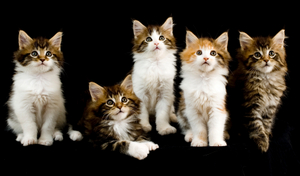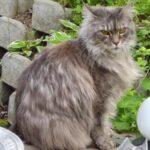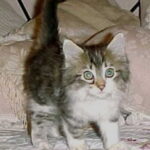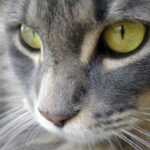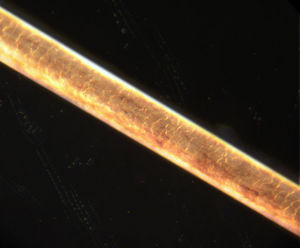Furry and friendly, the Maine Coon is one of the most unforgettable cats that you will ever come across. The first breed to originate in America, and the official cat breed of Maine, it can be found in many countries in the world. When you take on a Maine Coon, your life will never be the same.
Breed History
There are many colorful legends about how the Maine Coon came to be, including a legend about a mating between a raccoon and a ship’s cat. An even more colorful (and far more scientifically possible) legend states that the Maine Coon derived from two Angora cats beloved of Marie Antoinette who managed to escape the French Revolution by hitching a boat to America.
Most likely, all that happened was that Nature took the normal shorthaired cats and, faced with the harsh New England winters, gave the cats long coats. However, when placed side by side, a Maine Coon and an Angora do share some physical similarities, including facial structure and a fascination with water.
The breed did not have its own breed association until 1968, despite the breed being around since the mid 1800s.
General Appearance
There are many variations on a theme with Maine Coon Cats. Even littler mates can look vastly different in the length of their coat, color and the shape of their heads. However, most Maine Coons do share certain features. The first is that they grow long, thick coats, although not as long as a Persian. In addition to the thick coats, they have tufts of hair growing out of their ears and between their toes.
The nose should be long, ears big, eyes bright and clear and whiskers a crowning glory. There are Maine Coons that have short noses, but they are not allowed in the show ring. Maine Coons usually are big cats, tipping the scales at an average weight of twelve pounds, although twenty pounds in males is not uncommon. The paws are incredibly broad for a cat.
Maine Coons come in most colors and markings available in the cat kingdom, with the exception of the Himalayan point patterns and lavender (a kind of grey). They even come in rare colors like smoke tortoiseshell, the striking silver tabby, the subtle black smoke and the exotic red silver. Their eyes come in a variety of colors, with yellow and gold being the most common.
Health
There are very healthy Maine Coons and there are very sickly Mane Coons. Years ago, this writer’s family received two kittens from a supposedly reputable breeder — and one was healthy and long lived, while the other was sickly all of her life. There are many healthy Maine Coons waiting to be adopted in animal shelters and from Main Coon or longhaired cat breed rescues.
Maine Coons, especailly males, are prone to several health problems, including a genetic health disorder called feline hypertrophic cardiomyopathy. This can lead to congestive heart failure.
It is very important that you groom your Maine Coon regularly and keep on guard for tangles in the coat, which can become painful, dirty and itchy mats. If you do not show your Maine Coon and live in a hot climate, it’s more comfortable to keep your Maine Coon in a kitten clip.
Part of their physical health is keeping them calm by giving them lots of attention. Keep in mind that some are very affectionate while others like to be admired from a polite distance. Some Maine Coons can form very strong bonds with people in an almost dog-like fashion. Maine Coons seem to be born knowing what a camera is and will readily pose like a high fashion model.
References:
“ASPCA Complete Guide to Cats.” James R. Richards, DVM. Chronicle Books; 1999.
Maine Coon Rescue. “History, Legends and Myths of the Maine Coon.” http://www.mainecoonrescue.net/history.html
Vet Info. “Maine Coon Cat Health Problems.” http://www.vetinfo.com/maine-coon-cat-health-problems.html
Personal experience
